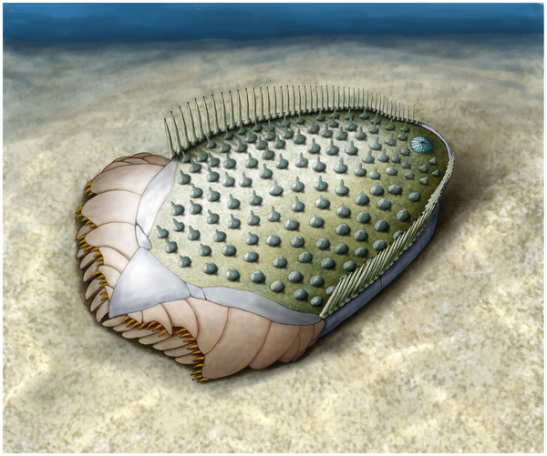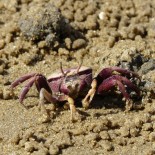From worm to star: primitive bilateral echinoderms from the Cambrian of southern Europe
Echinoderms are among the most fascinating invertebrates inhabiting the sea floor today. They encompass a variety of beautiful and strange forms including the flowery sea lily, the spiny sea urchin, the hairy sea potato or sand dollar, the wormy sea cucumber, or the multi-armed starfish and brittle star. They differ from other higher metazoans in the fact that they bear a characteristic pentaradiate body plan. This particular anatomy is acquired during ontogeny; larvae are born bilateral and only after going through an assymetric phase they finally become pentaradiate adults.
 The fossil record of ancient echinoderms is excellent thanks to the fact that they all bear a multi-plate, calcitic skeleton, which facilitates their preservation. Among extinct echinoderms, there is a group of Paleozoic animals, the carpoids, which arguably are among the weirdest creatures that ever inhabited our planet. Carpoids (which include 4 distinct groups: cnetocistoids, cinctans, solutans and stylophorans) are an enigmatic group of assymetrical echinoderms, generally with a rather flat body (or theca) and an elongated arm-like appendix (the aulacophor). Interpretations about their anatomy, mode of life and phylogenetic relationships are greatly controversial. Different researchers have considered them as ancestors of the chordates and hemichordates, but also as either primitive or modified echinoderms. The most consistent hypothesis is that they constitute a primitive group within echinoderms.
The fossil record of ancient echinoderms is excellent thanks to the fact that they all bear a multi-plate, calcitic skeleton, which facilitates their preservation. Among extinct echinoderms, there is a group of Paleozoic animals, the carpoids, which arguably are among the weirdest creatures that ever inhabited our planet. Carpoids (which include 4 distinct groups: cnetocistoids, cinctans, solutans and stylophorans) are an enigmatic group of assymetrical echinoderms, generally with a rather flat body (or theca) and an elongated arm-like appendix (the aulacophor). Interpretations about their anatomy, mode of life and phylogenetic relationships are greatly controversial. Different researchers have considered them as ancestors of the chordates and hemichordates, but also as either primitive or modified echinoderms. The most consistent hypothesis is that they constitute a primitive group within echinoderms.
In a recent paper, Samuel Zamora, Imran A. Rahman and Andrew B. Smith, researchers at the Natural History Museum of London and the University of Birmingham, report new and interesting data on fully bilaterian echinoderms from the early Middle Cambrian (ca. 510 million years) of southern Europe. They focus on the description of a new genus and species, Ctenoimbricata spinosa, from a recently discovered locality at Purujosa in the Iberian Chain of north-eastern Spain, but also describe a new specimen of Courtessolea moncereti from the classic section of Ferrals-les-Montagnes in the Montagne Noire in southern France. Their work using X-ray micro-tomography and other techniques allowed the authors to reconstruct the skeletal anatomy of Ctenoimbricata spinosa and produce a feasible reconstruction of the organism and its mode of life.
 Reconstruction of Ctenoimbricata spinosa. From Zamora et al. 2012. PLoS ONE 7(6): e38296. Usage under Creative Commons License.
Reconstruction of Ctenoimbricata spinosa. From Zamora et al. 2012. PLoS ONE 7(6): e38296. Usage under Creative Commons License.
Integration of the new data to reconstruct the phylogeny of pre-radial echinoderms allowed the authors to propose that the studied bilaterian forms are morphologically intermediate between ctenocystoideans and cinctans, two of the most basal classes, allowing to consider Ctenoimbricata spinosa as the closest known taxon to the hypothetical ancestor of all echinoderms.
Next time you see a starfish on the beach or a sea urchin on the rocky shore, take some time to remember the fine fossils from Purujosa and to think about the long evolutionary path covered by this wonderful group of invertebrates.
—————————————————————————-
Full reference for the article:
